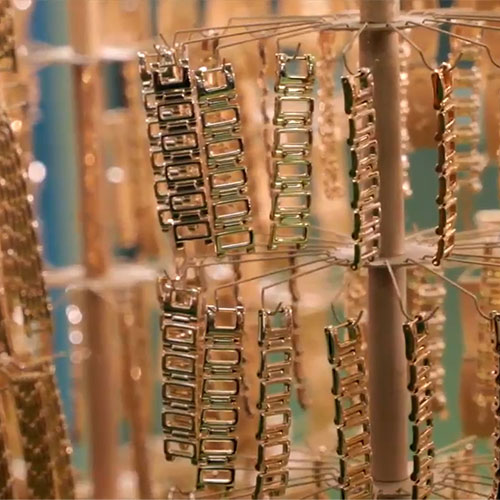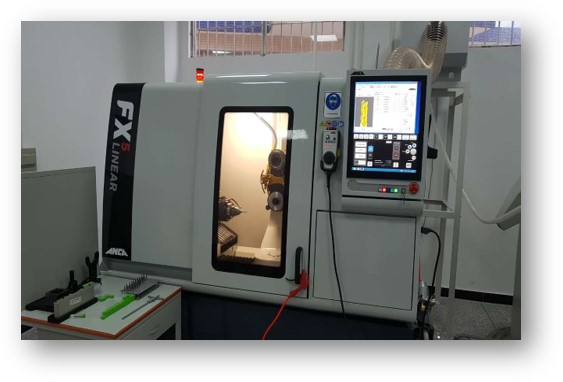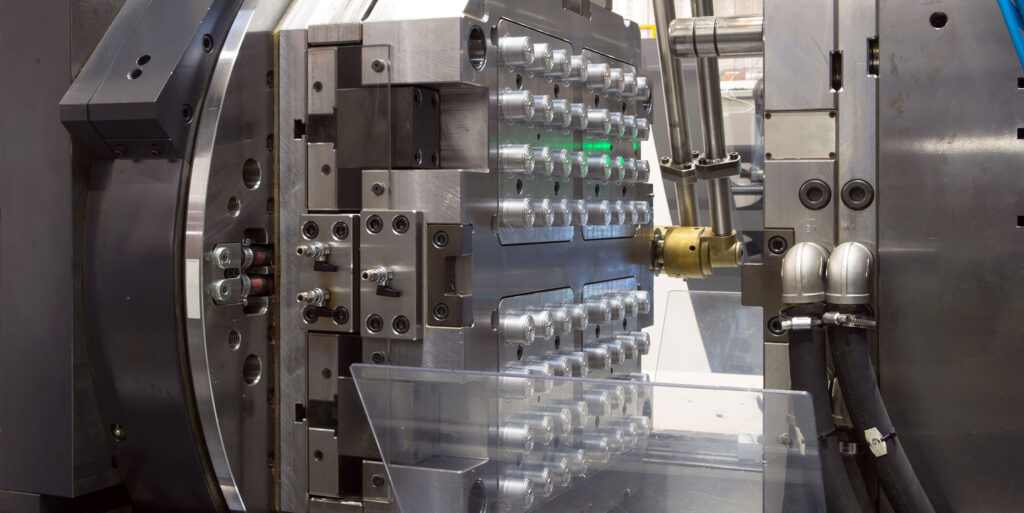PVD Physical Vapor Deposition

PVD 코팅이란 무엇일까요?
PVD 코팅은 **물리적 기상 증착(Physical Vapor Deposition)**의 약자로, 금속이나 비금속 표면에 얇은 막을 입혀 다양한 특성을 향상시키는 기술입니다. 마치 사과에 광택을 내는 왁스 코팅처럼, PVD 코팅은 제품의 표면에 보호막을 형성하여 다양한 기능을 부여합니다.
PVD 코팅의 원리
PVD 코팅은 진공 상태에서 고체 물질을 기화시켜 이온화된 상태로 만들고, 이를 기판(코팅하려는 물체)에 부착시키는 과정을 거칩니다. 이 과정에서 매우 얇고 균일한 막이 형성되며, 코팅 물질의 종류에 따라 다양한 특성을 부여할 수 있습니다.
PVD 코팅의 장점
- 내마모성 향상: 표면 경도를 높여 긁힘이나 마모에 강해집니다.
- 내부식성 향상: 부식을 방지하여 제품의 수명을 연장시킵니다.
- 미관 개선: 다양한 색상과 질감을 구현하여 제품의 외관을 향상시킵니다.
- 기능성 부여: 윤활성, 생체 친화성 등 다양한 기능을 부여할 수 있습니다.
PVD 코팅의 활용 분야
PVD 코팅은 다양한 산업 분야에서 활용되고 있습니다.
- 공구 산업: 드릴, 탭 등 공구의 내구성을 향상시키고, 가공 정밀도를 높입니다.
- 자동차 산업: 자동차 부품의 내마모성, 내식성을 향상시키고, 디자인을 다양화합니다.
- 의료 산업: 의료 기기의 생체 친화성을 높이고, 내식성을 향상시킵니다.
- 우주항공 산업: 고온, 고압 환경에서 사용되는 부품의 내구성을 향상시킵니다.
- 장식품 산업: 악세사리, 시계 등에 다양한 색상과 질감을 입혀 고급스러움을 더합니다.
PVD 코팅의 종류
PVD 코팅에 사용되는 물질에 따라 다양한 종류의 코팅이 가능합니다. 대표적인 예로는 TiN(질화티타늄), TiCN(탄화질화티타늄), DLC(다이아몬드 유사 탄소) 등이 있습니다.
TiN 코팅: 금색을 띠며, 높은 경도와 내마모성을 가지고 있어 공구 산업에서 많이 사용됩니다.
TiCN 코팅: TiN보다 더 높은 경도와 내마모성을 가지고 있으며, 열 안정성이 우수합니다.
DLC 코팅: 다이아몬드와 유사한 탄소 구조를 가지고 있어 매우 높은 경도와 내마모성을 가지고 있으며, 윤활성이 우수합니다.
PVD 코팅은 제품의 가치를 높이고 수명을 연장시키는 데 매우 유용한 기술입니다. 하지만 제품의 특성과 용도에 따라 적합한 코팅 방법을 선택해야 합니다.
금속 분말과 바인더를 혼합하여 성형한 후, 고온에서 열처리하여 금속 부품을 제조하는 혁신적인 기술입니다. 이 가공 방식은 정밀한 금속 부품을 대량 생산할 수 있는 효율적인 방법으로, 다양한 산업 분야에서 활발히 활용되고 있습니다.
PVD 코팅 공정순서
진공 상태 형성:
- 코팅 챔버 내부의 공기를 완벽하게 제거하여 진공 상태를 만듭니다. 진공 상태는 코팅 물질의 순수한 증착을 보장하고, 불순물 혼입을 방지합니다.
기판 세척 및 가열:
- 코팅할 기판을 깨끗하게 세척하여 표면에 흡착되어 있는 이물질을 제거합니다.
- 기판을 적절한 온도로 가열하여 코팅 막과 기판 사이의 접착력을 높입니다.
코팅 물질 기화:
진공 챔버 내에 설치된 타겟(target)에 코팅하고자 하는 물질을 부착시킵니다.
전기 아크 방전, 전자빔 증발, 스퍼터링 등의 방법을 이용하여 타겟 물질을 기화시킵니다.
전기 아크 방전: 고전압을 가하여 타겟 물질을 플라즈마 상태로 만들어 증발시키는 방법입니다.
전자빔 증발: 전자빔을 이용하여 타겟 물질을 가열하여 증발시키는 방법입니다.
스퍼터링: 이온을 고속으로 충돌시켜 타겟 물질을 튀어나오게 하는 방법입니다.
이온화 및 가속:
- 기화된 코팅 물질은 플라즈마 상태로 이온화됩니다.
- 전기장을 이용하여 이온화된 입자를 가속시켜 기판 표면에 충돌시킵니다.
기판 증착:
- 가속된 이온이 기판 표면에 충돌하면서 얇고 균일한 막을 형성합니다.
- 이 과정에서 원자 단위의 결합이 이루어져 강력한 접착력을 가지는 코팅 막이 만들어집니다.
냉각 및 배기:
- 코팅이 완료되면 기판을 냉각시키고, 진공 챔버 내부의 압력을 서서히 상승시켜 코팅된 제품을 꺼냅니다.
PVD 코팅의 장점:
- 균일한 막 형성: 원자 단위의 결합으로 매우 균일하고 緻密한 막을 형성할 수 있습니다.
- 다양한 물질 코팅 가능: 금속, 세라믹, 합금 등 다양한 물질을 코팅할 수 있습니다.
- 높은 경도 및 내마모성: 코팅 막의 경도가 매우 높아 마모에 강합니다.
- 우수한 내식성: 부식에 강하여 제품의 수명을 연장시킵니다.
- 미세한 표면 처리 가능: 미세한 부품에도 균일한 코팅이 가능합니다.
PVD 코팅의 단점:
- 고가의 장비: 진공 장비, 전원 공급 장치 등 고가의 장비가 필요합니다.
- 긴 공정 시간: 코팅 과정에 시간이 오래 걸립니다.
- 복잡한 형상의 제품에는 적용이 어려울 수 있습니다.
PVD 코팅은 제품의 기능과 외관을 향상시키는 데 매우 효과적인 기술입니다. 하지만 제품의 특성과 용도에 따라 적합한 코팅 방법을 선택해야 합니다
What is a PVD coating?
PVD coating stands for **Physical Vapor Deposition**, which is a technology that enhances various properties by applying a thin film on metal or non-metal surfaces. Just like a wax coating that glosses on an apple, PVD coating creates a protective layer on the surface of the product to give it a variety of functions.
Principles of PVD Coating
PVD coating vaporizes solid material in a vacuum to form an ionized state and attaches it to a substrate (the object to be coated). This process forms a very thin and uniform film, which can give various properties depending on the type of coating material.
Advantages of PVD Coating
Improved wear resistance: Increased surface hardness to resist scratches and wear.
Improved corrosion resistance: Prevent corrosion and extend the life of the product.
Improve aesthetics: Improve the appearance of the product by implementing a variety of colors and textures.
Functionality: It can give you a variety of functions such as lubricity, biocompatibility, etc.
Applications of PVD Coating
PVD coatings are used in various industries.
Tool Industry: Improving the durability of tools such as drills and tabs, and increasing machining precision.
Automotive Industry: Improve wear resistance, corrosion resistance of automotive parts, and diversify designs.
Healthcare Industry: Increase the biocompatibility of medical devices and improve corrosion resistance.
Aerospace industry: improves the durability of parts used in high temperature, high pressure environments.
Decorative Industry: Add luxury to accessories, watches, and more by applying a variety of colors and textures.
Types of PVD Coating
Depending on the material used for PVD coating, various kinds of coating are possible. Typical examples are TiN (Titanium Nitride), TiCN (Titanium Nitride), and DLC (Diamond-like Carbon).
TiN coating: It is gold-colored, has high hardness and abrasion resistance, so it is widely used in the tool industry.
TiCN coating: It has higher hardness and wear resistance than TiN, and has excellent thermal stability.
DLC coating: It has a diamond-like carbon structure, so it has very high hardness and abrasion resistance, and is highly lubricating.
PVD coating is a very useful technology for increasing the value and extending the life of a product. However, depending on the characteristics and use of the product, you should choose the appropriate coating method.
It is an innovative technology that manufactures metal parts by mixing metal powder and a binder and then heat treatment at high temperature. This processing method is an efficient method for mass production of precise metal parts and is actively used in various industries.
PVD Coating Process Order
Vacuum formation:
It completely removes the air inside the coating chamber to create a vacuum. The vacuum ensures pure deposition of the coating material and prevents impurity incorporation.
Cleaning and heating the substrate:
Clean the substrate to be coated and remove foreign substances adsorbed on the surface.
Heat the substrate to the appropriate temperature to increase the adhesion between the coating film and the substrate.
Vaporize the coating material:
Attach the material you want to coat to the target installed in the vacuum chamber.
The target material is vaporized using methods such as electric arc discharge, electron beam evaporation, sputtering, etc.
Electric arc discharge: A method of evaporating the target material into a plasma state by applying a high voltage.
Electron beam evaporation: A method of evaporating a target material by heating it using an electron beam.
Sputtering: A method of colliding ions at high speed to eject the target material.
Ionization and acceleration:
The vaporized coating material is ionized into a plasma state.
It uses an electric field to accelerate the ionized particles and collide with the surface of the substrate.
Substrate deposition:
Accelerated ions collide with the surface of the substrate, forming a thin, uniform film.
In this process, atomic units are combined to form a coating film with strong adhesion.
Cooling and exhaust:
When the coating is complete, cool the substrate and gradually increase the pressure inside the vacuum chamber to take out the coated product.
Advantages of PVD Coating:
Uniform film formation: A combination of atomic units can form a very uniform and 緻密 film.
Various materials can be coated: A variety of materials can be coated, including metals, ceramics, alloys, etc.
High hardness and wear resistance: The coating film is extremely hard and resistant to wear.
Excellent corrosion resistance: Corrosion resistant to extend the life of the product.
Fine surface treatment: uniform coating is possible on fine parts.
Disadvantages of PVD coating:
Expensive Equipment: Expensive equipment such as vacuum equipment, power supplies, etc. is required.
Long processing time: the coating process takes a long time.
It can be difficult to apply to products with complex shapes.
PVD coating is a very effective technique for enhancing the function and appearance of a product. However, depending on the characteristics and use of the product, you should choose the appropriate coating method
문 의 하 기
GPS는 중국 현지 자체 공장에서 경쟁력 있는 단가와 납기로 고객사들에게 우수한 품질의 제품을 제공합니다. 이를 통해 글로벌 시장에서의 경쟁력을 강화하며, 고객의 요구에 맞춘 신속하고 효율적인 서비스로 만족을 드리고 있습니다. 최신 기술을 바탕으로 고품질의 부품을 합리적인 가격에 제공함으로써 고객사의 생산성 향상에 기여하고 있습니다 - GPKOREA


